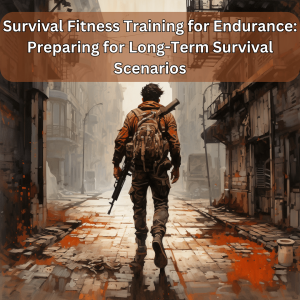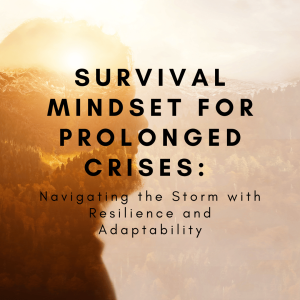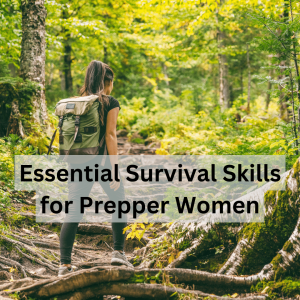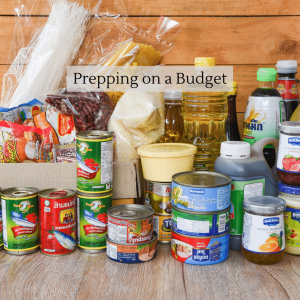In survival situations, physical fitness can mean the difference between life and death. Whether you find yourself lost in the wilderness, facing a natural disaster, or caught in a crisis, being physically fit can greatly enhance your chances of survival. Not only does physical fitness improve your strength, endurance, and agility, but it also boosts your mental resilience and increases your ability to make critical decisions under stress. In this article, we will explore the importance of physical fitness in survival situations and provide a 30-day workout plan geared toward enhancing your survival skills. Additionally, we will outline a sample diet that can support your physical fitness goals in these demanding situations.

Why Physical Fitness Matters in Survival Situations
- Strength and Endurance: In survival scenarios, you may find yourself required to perform physically demanding tasks such as carrying heavy loads, building shelters, or traversing challenging terrains. Regular strength training and cardiovascular exercises improve your overall strength and endurance, allowing you to handle these tasks with greater ease and efficiency.
- Mental Resilience: Survival situations often induce high levels of stress and anxiety. Physical fitness helps build mental resilience by releasing endorphins, reducing stress hormones, and improving overall mood. This increased mental fortitude enables you to stay focused, make rational decisions, and maintain a positive mindset during challenging circumstances.
- Agility and Flexibility: Survival situations often demand quick movements and adaptability. Regular exercise routines that focus on agility and flexibility, such as yoga or martial arts, enhance your body’s range of motion, balance, and coordination. This improved agility can aid you in navigating obstacles, avoiding hazards, and reacting swiftly to unexpected events.
- Stamina and Energy Conservation: When faced with limited resources and prolonged exertion, having optimal stamina and energy conservation techniques becomes crucial. A well-conditioned body can efficiently utilize energy reserves, allowing you to sustain physical activity for extended periods without exhausting yourself quickly.
- Injury Prevention: Survival situations are often fraught with hazards and risks. A physically fit body is better equipped to withstand injuries, recover faster, and adapt to challenging environments. Building strong muscles, bones, and joints through regular exercise reduces the likelihood of sustaining injuries and enhances your overall resilience.
30-Day Survival Workout Plan

Here’s a 30-day workout plan designed to improve your physical fitness for survival situations:
Week 1: Focus on building endurance and strength.
- Day 1: Cardiovascular exercise (running, cycling, swimming) for 30 minutes.
- Day 2: Full-body strength training (push-ups, squats, lunges) for 30 minutes.
- Day 3: Rest day.
- Day 4: Interval training (alternating between intense bursts of exercise and short recovery periods) for 30 minutes.
- Day 5: Yoga or stretching routine for flexibility and relaxation.
- Day 6: Cardiovascular exercise for 40 minutes.
- Day 7: Rest day.
Week 2: Emphasize agility and coordination.
- Day 8: Circuit training (a series of exercises targeting different muscle groups with minimal rest) for 30 minutes.
- Day 9: High-intensity interval training (HIIT) for 20 minutes.
- Day 10: Rest day.
- Day 11: Martial arts or dance class for agility and coordination.
- Day 12: Cardiovascular exercise for 40 minutes.
- Day 13: Strength training focusing on core muscles (planks, Russian twists) for 30 minutes.
- Day 14: Rest day.
Week 3: Enhance stamina and endurance.
- Day 15: Hiking or trail running for 60 minutes.
- Day 16: Full-body strength training using weights or resistance bands for 30 minutes.
- Day 17: Rest day.
- Day 18: Cycling or spinning class for cardiovascular endurance.
- Day 19: HIIT workout targeting upper and lower body for 30 minutes.
- Day 20: Yoga or Pilates for flexibility and recovery.
- Day 21: Rest day.
Week 4: Maintain and refine skills.
- Day 22: Full-body circuit training for 30 minutes.
- Day 23: Swimming or water-based activities for cardiovascular endurance.
- Day 24: Rest day.
- Day 25: Outdoor activities like rock climbing, obstacle course, or hiking with weighted backpack.
- Day 26: Strength training focusing on functional movements (squats, deadlifts, pull-ups) for 40 minutes.
- Day 27: Yoga or stretching routine for recovery.
- Day 28: Rest day.
Sample Survival Diet

Maintaining a balanced diet is crucial for optimal physical performance and overall health. In survival situations, access to diverse food options may be limited, but it’s important to make the most of available resources. Here’s a sample survival diet plan:
Breakfast:
- Oatmeal with dried fruits and nuts.
- Hard-boiled eggs.
- Herbal tea or water.
Lunch:
- Tuna or salmon pouches.
- Whole-grain crackers.
- Fresh or dehydrated fruits.
- Water or electrolyte-rich beverages.
Snacks:
- Energy bars.
- Trail mix (nuts, dried fruits, seeds).
- Jerky or beef sticks.
- Water or natural fruit juices.
Dinner:
- Canned beans or legumes.
- Quinoa or brown rice.
- Canned vegetables.
- Nutritional supplements, if available.
- Water or tea.
Hydration:
- Carry a water bottle and drink regularly to stay hydrated.
- Purify water from natural sources before consumption, if necessary.
- Avoid sugary beverages and alcohol.
Please note that this sample diet is a general guideline, and specific nutritional needs may vary depending on individual requirements, allergies, and available resources. It’s advisable to consult a healthcare professional or nutritionist for personalized recommendations in survival situations.
In conclusion, physical fitness plays a vital role in survival situations, enhancing your strength, endurance, mental resilience, agility, and injury prevention. Following a well-rounded workout plan and maintaining a balanced diet can significantly improve your chances of survival and enable you to navigate challenging circumstances more effectively. Remember, preparing your body for the unexpected can be the key to overcoming obstacles and ensuring your well-being in survival situations.





